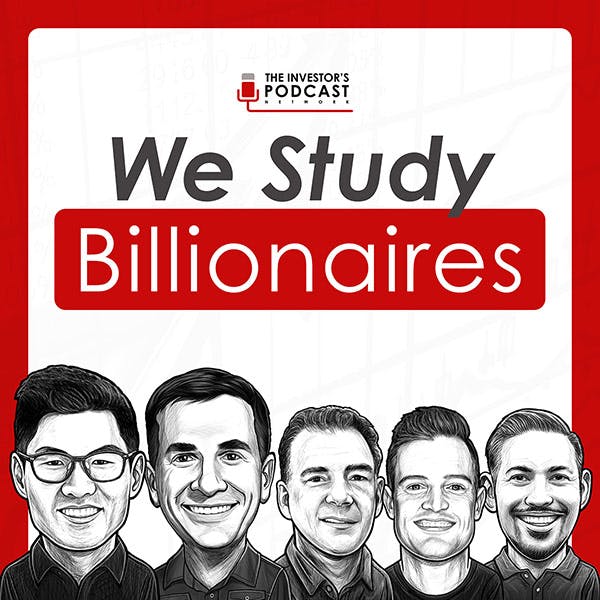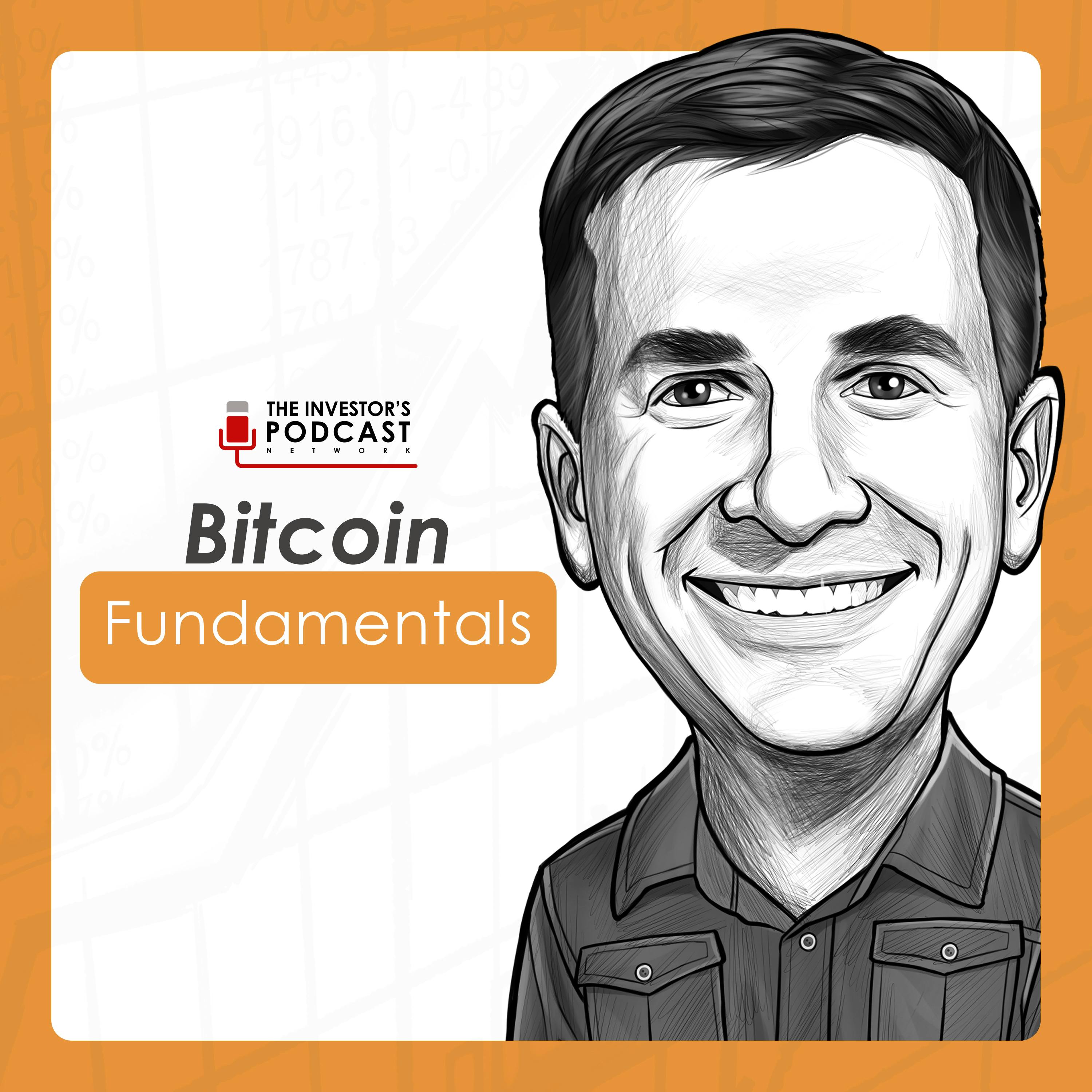
July 5, 2024 • 1hr 23min
TIP642: The Story of Starbucks: Building an Iconic Brand w/ Clay Finck
We Study Billionaires - The Investor’s Podcast Network

Key Takeaways
- Howard Schultz built Starbucks into a global coffee empire by focusing on creating a great customer experience and company culture
- Starbucks stock has returned 18.6% annually since its 1992 IPO, significantly outperforming the S&P 500
- Key to Starbucks' success was Schultz's vision of creating a "third place" between home and work for customers
- Schultz emphasized taking care of employees, offering benefits like healthcare and stock options to part-time workers
- Starbucks grew rapidly while maintaining quality by resisting franchising and keeping stores company-owned
- The company built a powerful brand without much traditional advertising, relying instead on word-of-mouth and the in-store experience
- Schultz was willing to take risks and innovate, like partnering with Pepsi to create bottled Frappuccinos
- Flexibility and adapting to changing consumer tastes (like adding cold drinks) was crucial for long-term success
Introduction
In this episode, host Clay Finck discusses the story of Howard Schultz and the creation of Starbucks, based on Schultz's book "Pour Your Heart Into It." Schultz grew up in public housing in New York City and built Starbucks from a small Seattle coffee shop into a global brand with over 38,000 stores worldwide. The episode covers Starbucks' history from its founding in 1971 through its rapid growth in the 1990s.
Topics Discussed
Howard Schultz's Background and Early Career (2:04)
Howard Schultz was born in 1953 and raised in a working-class family in public housing in New York City. He developed a strong work ethic from a young age, working various jobs to help support his family. After college, he worked in sales at Xerox and a houseware company before discovering Starbucks.
- Schultz was the first in his family to graduate college
- He learned valuable sales and marketing skills at Xerox
- In 1981, he noticed Starbucks placing large orders for coffee makers
Schultz's Discovery of Starbucks (8:05)
In 1981, Schultz visited the original Starbucks store in Seattle's Pike Place Market. He was immediately impressed by the quality of the coffee and the passion of the founders.
- Starbucks at the time only sold whole bean coffee, not drinks
- Schultz felt he had "discovered a whole new continent" of coffee
- He realized Starbucks had potential to expand beyond Seattle
Joining Starbucks and Trip to Italy (12:05)
After convincing the Starbucks founders to hire him, Schultz left his successful career in New York to join the small coffee company in Seattle in 1982. A pivotal moment came when he visited Italy in 1983 and saw the vibrant espresso bar culture there.
- Schultz took a major pay cut to join Starbucks
- In Italy, he was inspired by the 200,000 coffee bars and role of baristas
- "What we had to do was unlock the romance and mystery of coffee," Schultz realized
Launching Espresso Bars and Leaving Starbucks (18:06)
Schultz wanted to bring the Italian espresso bar concept to Starbucks, but the founders were hesitant. He eventually opened the first Starbucks espresso bar in 1984, but left in 1985 to start his own coffee company when the founders resisted further expansion.
- The first espresso bar was an immediate hit, serving 800 customers a day
- Schultz raised $400,000 to launch his own company, Il Giornale
- He pitched 242 investors, with 217 rejecting him before securing funding
Acquiring Starbucks and Rapid Expansion (30:08)
In 1987, Schultz raised $3.8 million to purchase Starbucks from the original founders. He then began rapidly expanding the company, opening new stores across the U.S.
- Schultz promised investors to open 125 new stores in 5 years
- He focused on creating a strong company culture and taking care of employees
- Starbucks offered full health benefits to part-time workers, unusual at the time
Building the Starbucks Brand (38:09)
Schultz aimed to make Starbucks more than just a coffee shop, but a "third place" between home and work. The company focused on creating a premium experience rather than competing on price.
- Starbucks invested in store design and employee training
- The company spent little on traditional advertising
- Schultz wanted to avoid becoming "another soulless chain"
Going Public and Dealing with Growth (48:29)
Starbucks went public in 1992, raising $29 million. The company continued to grow rapidly throughout the 1990s, but Schultz had to balance expansion with maintaining quality and culture.
- The stock jumped from $17 to $21 on its first day of trading
- Schultz learned to detach his view of the company from short-term stock price fluctuations
- He resisted franchising to maintain control over store quality
Product Innovation and Partnerships (54:13)
To continue growing, Starbucks expanded beyond its core coffee shops. This included developing new products like the Frappuccino and partnering with companies like Pepsi for distribution.
- The Frappuccino was invented in 1994 and became a major hit
- Starbucks formed a joint venture with Pepsi to sell bottled coffee drinks
- These moves helped Starbucks reach customers outside its stores
Maintaining Quality While Expanding (1:00:14)
As Starbucks grew into a major corporation, Schultz worked to maintain the quality and authenticity that made the brand successful. This included carefully considering partnerships and store designs.
- Schultz wanted to enhance local coffee cultures, not dominate them
- The company invested in creative store designs to avoid being "cookie-cutter"
- "I would never allow Starbucks to sacrifice or downgrade its elegance and style for the sake of growth," Schultz wrote
Leadership Philosophy and Company Culture (1:08:15)
Schultz emphasized creating a strong company culture and taking care of employees as key to Starbucks' success. He believed in open communication and aligning employee interests with the company's.
- Starbucks granted stock options to all employees, even part-time workers
- Schultz communicated openly about challenges the company faced
- He aimed to make Starbucks "admired not only for what we have achieved, but for how we have achieved it"
Long-Term Vision for Starbucks (1:10:15)
Even as Starbucks grew into a global brand, Schultz maintained an ambitious long-term vision for the company. He wanted Starbucks to become one of the most recognized and respected brands in the world.
- Starbucks grew from $700 million revenue in 1996 to $36 billion in 2023
- The company expanded from 1,000 stores in 1996 to over 38,000 today
- Schultz aimed to maintain Starbucks' passion and values even as a global company
Conclusion
Howard Schultz built Starbucks from a small Seattle coffee shop into one of the world's most valuable brands by focusing on creating a premium coffee experience and strong company culture. Key to the company's success was Schultz's vision of Starbucks as a "third place" between home and work, emphasis on taking care of employees, willingness to innovate, and maintaining quality while rapidly expanding. Though no longer CEO, Schultz's leadership philosophy and focus on long-term value creation helped make Starbucks one of the best-performing stocks of the past 30 years.









